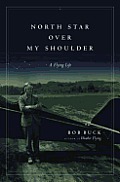 by Robert Buck
by Robert Buck
If anyone is qualified to write a history of piloting, it is Robert Buck. Lindbergh inspired him to start flying, and he still glides and flies near his Vermont home. He’s been writing about flying since before World War II and is the author of the definitive pilot’s guide to flying through weather.
The story of flight in the 20th Century is largely one of the progressive obviation of skills. Technology advanced so quickly that many skills and technologies that were essential in the 1930s are obsolete.
Buck had tremendous longevity, and seniority frequently placed him among the first pilots to use new technology or fly new routes. Still, he rejects the title “pioneer,” reserving that for those like Antoine de St. Exupery, author of The Little Prince, philosopher, and early mail pilot. “St.-Ex” had to fly unreliable craft over hostile territory. Buck may have had piston engines, but the price of a breakdown was rarely death. Even his wartime flying was through Allied or neutral airspace.
Technology has separated the pilot from his environment. For one thing, weather no longer invades the cockpit, like in the DC-2. For another thing, we fly over most of it. A jet pilot flies through the airspace, rather than over the ground. The jet created “flyover country.” Before jets, out where I live, it was more like “fly-into country.”
In the early days, the airlines made their money carrying mail. Pilots took risks that general aviation pilots today, with better equipment, would never consider responsible, or the FAA legal. They flew through weather, without proper instruments or knowledge of how best to use the ones they had, hoping to peek through the clouds to see where they were. While Buck minimizes the fatalities from this sort of thing, William Langewiesche’s fine article, “The Turn,” in Inside the Sky, explains how sightless flight was made safe, and the foolish pride that kept it unsafe for so long.
For a jet flight, the only ground weather that matters is near the airports. The upper atmosphere matters more, primarily for fuel efficiency. An eastward flight will get a tailwind from the jet stream. A jet engine is most efficient at cooler temperatures. The pilot seeks the tropopause, where the ground atmosphere, or troposphere, meets the upper atmosphere, or stratosphere, and temperature is at a minimum.
As propellers were on their way out, during and immediately after World War II, Buck captained a specially-equipped B-17 around the world in search of bad weather. Its purpose was to research precipitation static, which interrupted communications. Buck learned a lot about flying more safely into thunderstorms, a major source of static. No doubt this experience led to Buck’s best-known book, Weather Flying, still in print after 30 years. The primary research was quickly made unnecessary. FM radio got rid of the static, and jet planes climb past storms altogether.
Improvements in navigation have also separated pilots from external cues. Navigation began with mechanical flight calclators, fixed landmarks, ambiguous radio beacons, and celestial navigation. No small part of Lindbergh’s achievement was his navigation over thousands of miles of water. As high-frequency began to give both directional and distance information, reference to maps became less frequent. Now, GPS displays a map with the plane’s position and direction.
In one of those seemingly frequent confluences of diverse technologies, pilots were allowed to stop looking at the ground just when they could no longer see it.
Buck’s storytelling parallels these changes, talking progressively less about the mechanics of flying and more about the trips themselves. We hear more about France, Switzerland, and Israel, and less about weather, fuel requirements, and engine reliability. Tyrone Power, it turns out, was fairly down-to-earth, and a pretty good pilot, to boot. Howard Hughes really was nuts.
Disappointingly, Buck sometimes uses flying terminology without explaining it first. Anyone who doesn’t know beforehand what compass lag is, what flaps do, or what carburetor ice can do to an engine, may find himself scratching his head. Having gone to such lengths to establish the book for the layman, Buck should have been more careful not to assume his readers would have an aeronautical dictionary close at hand.
Robert Buck saw up close the maturation of the aircraft and the airlines. At a time when politicians are calling general aviation a threat to the nation’s security, some perspective is in order. This book is as good a place to start as any.